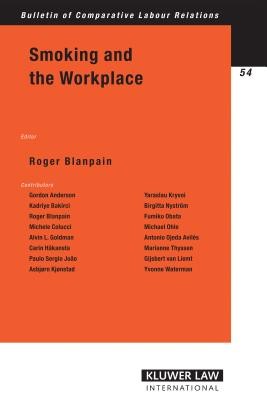
- We will send in 10–14 business days.
- Publisher: Kluwer Law International
- Year: 2005
- Pages: 268
- ISBN-10: 9041123253
- ISBN-13: 9789041123251
- Format: 15.6 x 23.4 x 1.4 cm, softcover
- Language: English
- SAVE -10% with code: EXTRA
Smoking and the Workplace (e-book) (used book) | bookbook.eu
Reviews
Description
Tobacco is a pressure point of globalisation. It is both an enormously profitable international business, providing work for millions, and a universally targeted health hazard. If we admit its function as the primary cause of lung cancer, tobacco is, legality notwithstanding, by a large margin the most dangerous drug on the market. It is particularly insidious as a passive contaminant of enclosed air spaces such as the workplace. Given that most people have day jobs of one kind or another, the crucial questions arise: Is there a fairly standard workplace tobacco policy? And if so, how far does it reach? Smoking and the Workplace is the first comprehensive global study of attempts to control the level of tobacco smoke in the workplace environment. In four introductory essays, distinguished authors investigate such basic issues as the human right to smoke tobacco and the economic right to market it, with serious caveats from the International Labour Organisation and the European Union. The survey then proceeds with thirteen national reports from European, Asian, and North American countries. Among the approaches to the underlying problems, the book addresses the following: company policies regarding smoking; production locations and markets; international trade flow; the threat of litigation; public health; declining employment; corporate strategies; government limitations, warnings, and advertising bans; concentration of production; employment level; and, the impact of the WHO Framework Convention on Tobacco Control (2003).
EXTRA 10 % discount with code: EXTRA
The promotion ends in 19d.00:37:47
The discount code is valid when purchasing from 10 €. Discounts do not stack.
- Publisher: Kluwer Law International
- Year: 2005
- Pages: 268
- ISBN-10: 9041123253
- ISBN-13: 9789041123251
- Format: 15.6 x 23.4 x 1.4 cm, softcover
- Language: English English
Tobacco is a pressure point of globalisation. It is both an enormously profitable international business, providing work for millions, and a universally targeted health hazard. If we admit its function as the primary cause of lung cancer, tobacco is, legality notwithstanding, by a large margin the most dangerous drug on the market. It is particularly insidious as a passive contaminant of enclosed air spaces such as the workplace. Given that most people have day jobs of one kind or another, the crucial questions arise: Is there a fairly standard workplace tobacco policy? And if so, how far does it reach? Smoking and the Workplace is the first comprehensive global study of attempts to control the level of tobacco smoke in the workplace environment. In four introductory essays, distinguished authors investigate such basic issues as the human right to smoke tobacco and the economic right to market it, with serious caveats from the International Labour Organisation and the European Union. The survey then proceeds with thirteen national reports from European, Asian, and North American countries. Among the approaches to the underlying problems, the book addresses the following: company policies regarding smoking; production locations and markets; international trade flow; the threat of litigation; public health; declining employment; corporate strategies; government limitations, warnings, and advertising bans; concentration of production; employment level; and, the impact of the WHO Framework Convention on Tobacco Control (2003).


Reviews